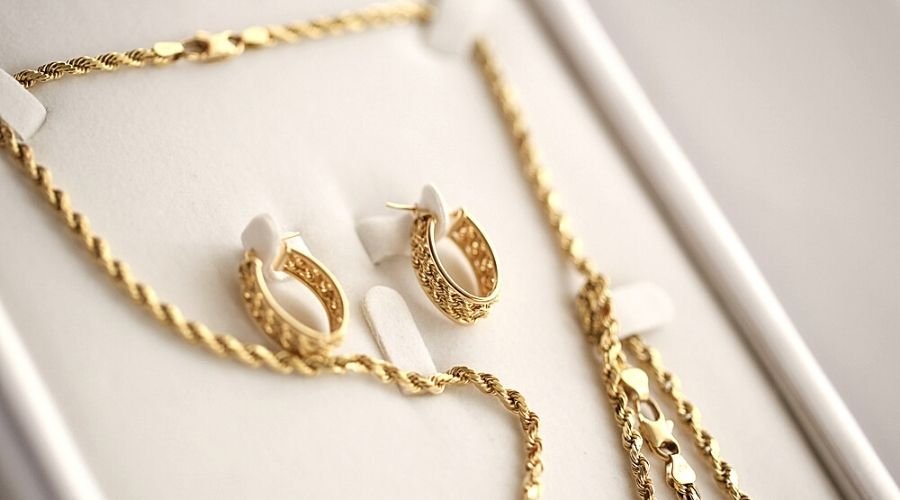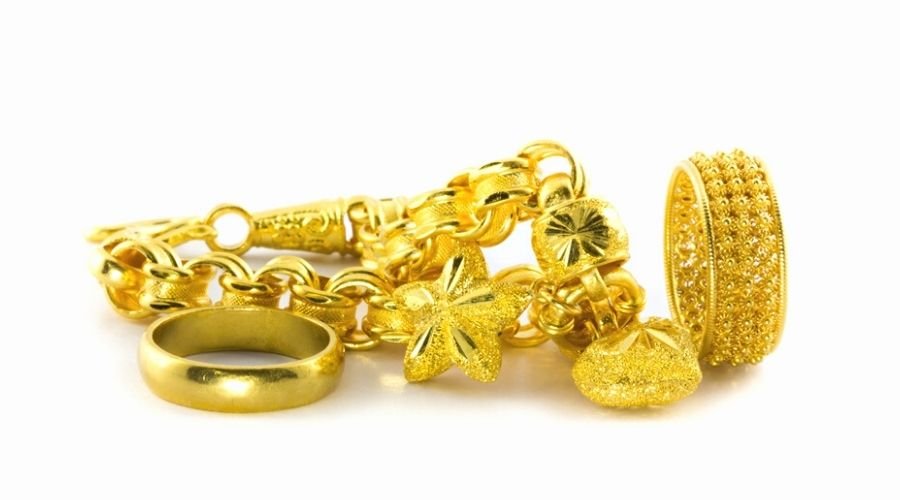HERE’S EVERYTHING YOU SHOULD KNOW ABOUT 585 GOLD

HERE’S EVERYTHING YOU SHOULD KNOW ABOUT 585 GOLD

Genuine gold jewelry items have a small number imprinted on them. There are a few standard numbers you’ll find on most gold products. Many jewelry owners and shoppers don’t notice the number, do not know what it means, or assume it is a manufacturer’s ID number.
The number on the back of a piece of gold jewelry or listed in an advertisement or certification isn’t random. It indicates the purity levels of the gold used in that piece of jewelry.
Armed with that knowledge, jewelry buyers can ensure they get a fair price every time they shop for gold jewelry. Here are what those gold markings mean.
COMMON GOLD MARKINGS
The following are common numbers imprinted on jewelry. Here’s what they mean in terms of the percentage of real gold.
- 333: It is 8 karat gold, about 33% pure gold. US jewelry makers do not display this number, but it is on European-made jewelry.
- 375: This means 9 karat gold. Often, the marking only appears on British jewelry.
- 416/417: These numbers are interchangeable and indicate 10 karat gold. Previously, this was the minimum a piece could be in the USA to be considered a gold product.
- 500: Jewelry with a 500 notation is 12 karat gold. This purity is uncommon as it tends to be very dull and almost off-white.
- 583/585: These equal 14 karats. The two numbers are interchangeable.
- 750: Jewelry with this number is 18 karat gold.
- 916/917: These numbers indicate 22 karat gold. Neither is used much in jewelry because of cost, but it is the “go-to” karat for gold leaf and plating.
- 999: It refers to 24 karat gold and is considered too soft for jewelry.
585 GOLD: WHAT IS IT?

Most of the jewelry marketed as “gold” is a gold alloy. Gold in its purest form is too soft and malleable for everyday use. Alloy metals (nickel, copper, or zinc) help harden the gold so it can withstand normal wear and tear.
585 gold is labeled as 14 karats and is 58.3 percent pure gold. When a piece includes 585 gold, the rest of the item’s ingredients are alloy metals. Some jewelry manufacturers and sellers will use a slightly higher percentage of gold so that they can call it “585” gold. 585 is easier to remember from an advertising and marketing standpoint.
Gold has two isotopes: Au-197 and Au-198. The gold used in jewelry is usually Au-197. Au-198 is radioactive and generally used in medicine and for nuclear purposes. Additionally, all the gold on earth came from asteroids carrying the debris of dead stars.
585 GOLD: IS IT REAL?
Karats measure how much pure gold comprises any piece of gold. As a measurement, each karat represents a little over four percent of the total 24 karats that make up a pure gold piece. The balance, minus the karat total, is the amount of alloy in a product.
Practically, that means a 1 karat gold item is 23 parts alloy and 1 part gold. A 14 karat gold item, also known as 583/585 gold, means that over half of the mixture, or 58.3 percent and 58.5 percent, respectively, is pure gold.
585 GOLD: PURITY HALLMARKS
In jewelry-making, “hallmarking” means the process of certifying how much pure gold is in one piece. The hallmark is also known as a stamp. The stamp is imprinted on jewelry to let consumers know how much gold makes up that piece. For 14 karat gold, there are a few options:
- 14K: This indicates that a gold piece is 583 or 585 gold. All of them have the same price, value, and purity.
- 14K GP: “GP” means “Gold-Plated.” Gold plated objects are a base ingredient coated with a thin layer of 14 karat gold.
- 14K GEP: These marks mean an object’s base metals were electroplated with 14 karat gold. Electroplating is the process of using an electric current to apply a metal covering to an object.
- 14k GF: “GF” means “gold filled. A thicker layer of gold coats an object that is gold-filled. The layer makes up at least five percent of the final piece. Gold-filled plating is much thicker than gold plating.
585 GOLD: PRICE

As a precious metal, the spot market determines the value of an ounce of gold. For a gold piece of jewelry, the fineness of gold determines its quality.
Fineness is the weight of a precious metal (gold, silver, etc.) relative to the total weight of the piece. High fineness, for example, has a high degree of gold and looks better, is more valuable, and is easier to maintain. Lower fineness has less gold as a part of the hole.
While it does have less gold than a piece of jewelry made of fine gold, the tradeoff is that gold of lower fineness is harder and wears better.
How gold in jewelry is valued differs from how gemstones are valued. Diamonds, for instance, are measured in caratages every 200 milligrams. With jewelry, the carat of a diamond is considered separate from the rest of the jewelry. When assessing the value of jewelry, the fineness of the gold in the jewelry makes up the gold’s value, which is then added to the value of its other components.
585 GOLD: COLOR CHOICES
Gold jewelry comes in three colors: White, yellow and rose. Each color reflects different kinds of alloys. With 585 gold jewelry, the price differences between the three are negligible.
YELLOW GOLD

Yellow gold is the most common gold used. The composition of yellow gold is pure gold and alloy metals, including copper and zinc.
The advantages of yellow gold are:
- It is the most hypoallergenic of the three golds
- It compliments darker skin tones
The disadvantages are:
- It is malleable and softer, which means it dents and scratches more easily
ROSE GOLD

Rose gold consists of copper and pure gold. The more copper present, the deeper the color. The less copper used, the rosier the color becomes.
The advantages of rose gold are:
- It is highly durable
- It does not need plating
The disadvantages of rose gold are:
- Some people are allergic to copper
WHITE GOLD

White gold products are pure gold mixed with white metals like silver, nickel, and palladium. White gold pieces often have a rhodium coating.
Its advantages are:
- It looks great
- It looks like platinum but costs less
- It has greater durability and is more scratch-resistant than yellow gold
White gold’s disadvantages are:
- It needs regular polishing
- The rhodium plating needs regular replacement
- It is not hypoallergenic
SHOPPING FOR 585 GOLD: HOW TO BUY
When investing in gold, there are three things to consider:
- The market price of gold
- Purity of gold
- Its certification
If you’re considering buying 585 gold jewelry, make sure to verify the jewelry pieces’ hallmarks and markings. If you are very active, you do not want jewelry that will scratch or dent easily.
585 GOLD: THE BOTTOM LINE
When you buy 585 gold, you are getting the happy medium. The jewelry has a high gold content but is more durable than higher karat gold. It’s also relatively affordable and comes in a range of colors. When looking at 585 jewelry, it is important to remember that a 585 piece may have “14k,” 585, or 14k and 585 imprints on it as well.
You also should ask for certification of the gold content. Otherwise, you may have to find another way to verify the jewelry’s gold content.
